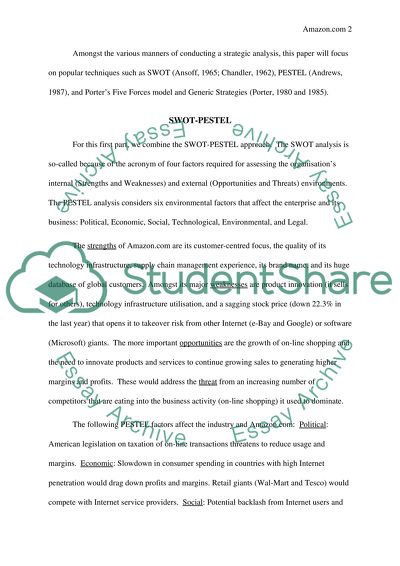Cite this document
(“Strategic Analysis of Amazon.com Essay Example | Topics and Well Written Essays - 1250 words”, n.d.)
Strategic Analysis of Amazon.com Essay Example | Topics and Well Written Essays - 1250 words. Retrieved from https://studentshare.org/miscellaneous/1526519-strategic-analysis-of-amazoncom
Strategic Analysis of Amazon.com Essay Example | Topics and Well Written Essays - 1250 words. Retrieved from https://studentshare.org/miscellaneous/1526519-strategic-analysis-of-amazoncom
(Strategic Analysis of Amazon.Com Essay Example | Topics and Well Written Essays - 1250 Words)
Strategic Analysis of Amazon.Com Essay Example | Topics and Well Written Essays - 1250 Words. https://studentshare.org/miscellaneous/1526519-strategic-analysis-of-amazoncom.
Strategic Analysis of Amazon.Com Essay Example | Topics and Well Written Essays - 1250 Words. https://studentshare.org/miscellaneous/1526519-strategic-analysis-of-amazoncom.
“Strategic Analysis of Amazon.Com Essay Example | Topics and Well Written Essays - 1250 Words”, n.d. https://studentshare.org/miscellaneous/1526519-strategic-analysis-of-amazoncom.


